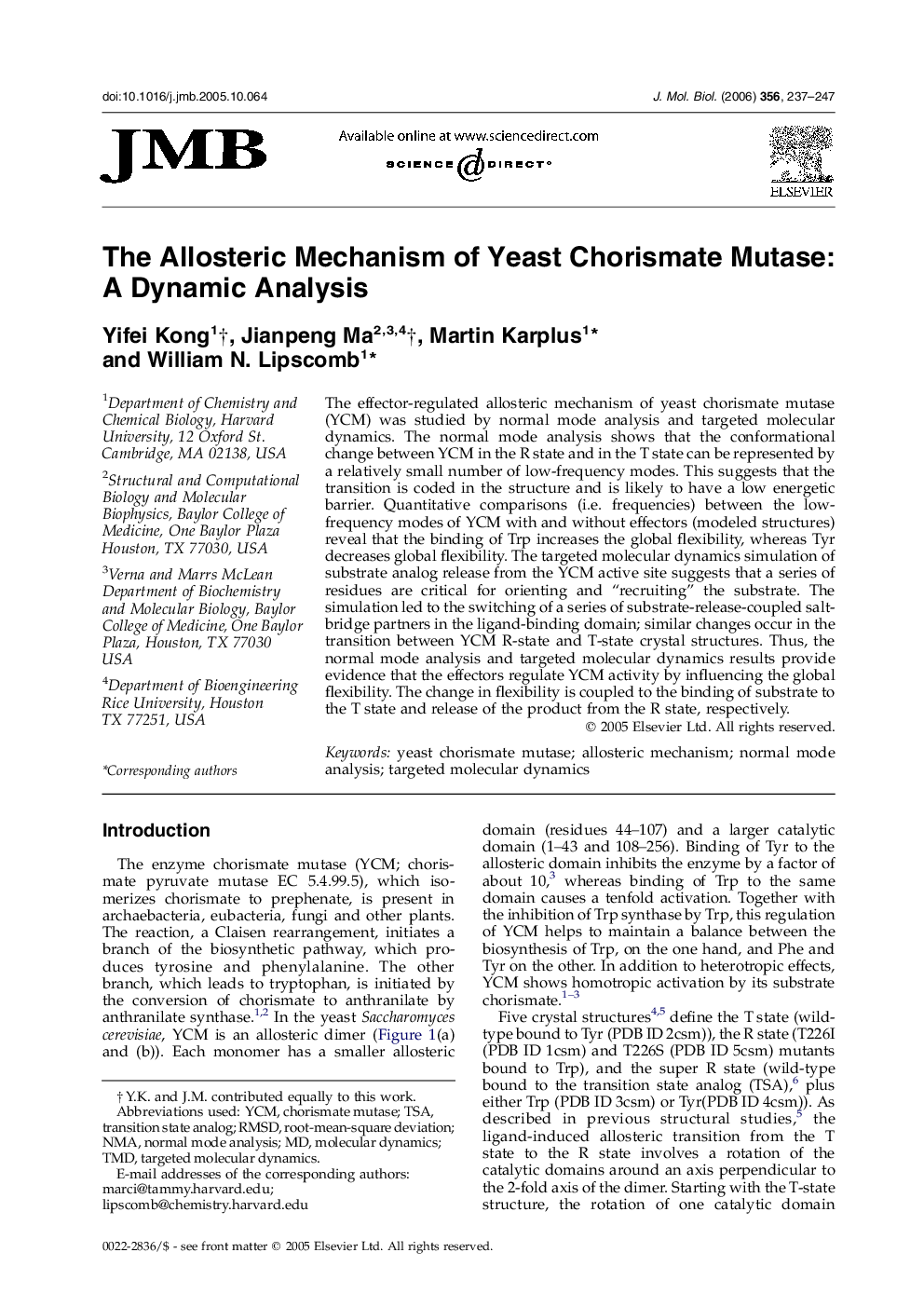| Article ID | Journal | Published Year | Pages | File Type |
|---|---|---|---|---|
| 2189926 | Journal of Molecular Biology | 2006 | 11 Pages |
The effector-regulated allosteric mechanism of yeast chorismate mutase (YCM) was studied by normal mode analysis and targeted molecular dynamics. The normal mode analysis shows that the conformational change between YCM in the R state and in the T state can be represented by a relatively small number of low-frequency modes. This suggests that the transition is coded in the structure and is likely to have a low energetic barrier. Quantitative comparisons (i.e. frequencies) between the low-frequency modes of YCM with and without effectors (modeled structures) reveal that the binding of Trp increases the global flexibility, whereas Tyr decreases global flexibility. The targeted molecular dynamics simulation of substrate analog release from the YCM active site suggests that a series of residues are critical for orienting and “recruiting” the substrate. The simulation led to the switching of a series of substrate-release-coupled salt-bridge partners in the ligand-binding domain; similar changes occur in the transition between YCM R-state and T-state crystal structures. Thus, the normal mode analysis and targeted molecular dynamics results provide evidence that the effectors regulate YCM activity by influencing the global flexibility. The change in flexibility is coupled to the binding of substrate to the T state and release of the product from the R state, respectively.
